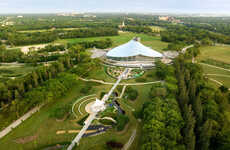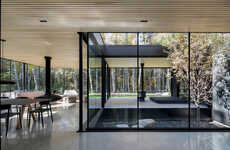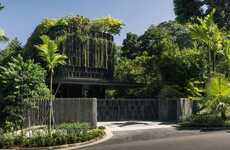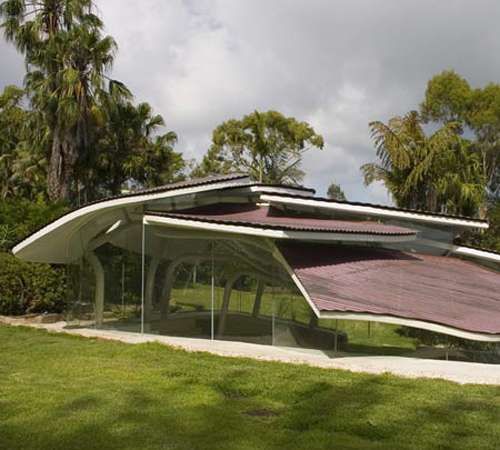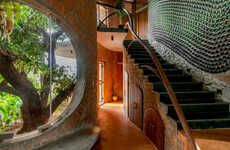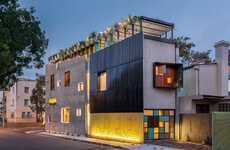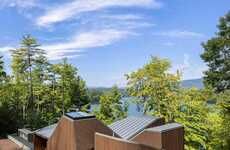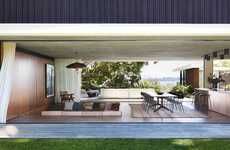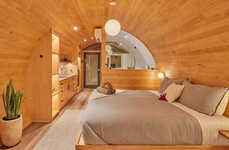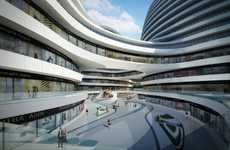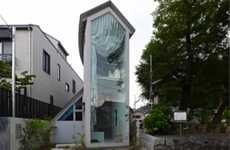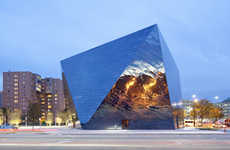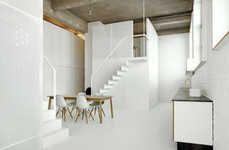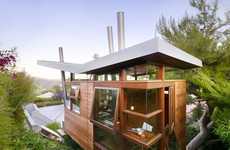
Organic Architecture at its Best in the Leaf House by Undercurrent Architect
Jessica Marcel — January 5, 2010 — Eco
References: undercurrent-architects & design-milk
Hugh Rutherford photographed the Leaf House seen here, which was designed by Undercurrent Architects and is located in Sydney, Australia. The organic shape of the Leaf House is refreshing; in place of normal supports there are branch-shaped beams that twist and turn. The roof is a series of panels, giving the impression of a canopy. The Leaf House is a great example of blending modern technology with organic design.
Implications - Consumers today have begun to invest significant amounts of time and money into products that complement an eco-friendly lifestyle. A business that is capable of providing everyday items boasting green qualities will appeal to many consumers. Not only will its compassion for the well-being of the earth be portrayed, but it will also benefit by adapting its products to meet modern demands of consumers.
Implications - Consumers today have begun to invest significant amounts of time and money into products that complement an eco-friendly lifestyle. A business that is capable of providing everyday items boasting green qualities will appeal to many consumers. Not only will its compassion for the well-being of the earth be portrayed, but it will also benefit by adapting its products to meet modern demands of consumers.
Trend Themes
1. Organic Architecture - The rise of eco-friendly architecture using organic shapes and materials, creating opportunities for sustainable real estate development.
2. Blending Technology and Organic Design - Opportunities exist for companies to innovate and incorporate modern technology within organic design principles, creating unique and sustainable products.
3. Green Consumerism - The increasing demand for eco-friendly products is creating opportunities for businesses to develop and market green products.
Industry Implications
1. Real Estate Development - Developers can adopt organic architecture to create sustainable and attractive buildings to meet eco-friendly consumers' demands.
2. Interior Design - Incorporating organic design principles and materials in interior design will appeal to the environmentally conscious market.
3. Product Design - Businesses can create eco-friendly products that meet consumers' demand for sustainable, green products to fit in with their lifestyle.
5.5
Score
Popularity
Activity
Freshness



